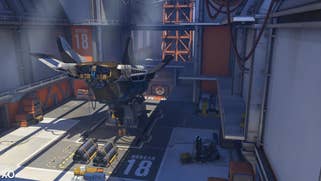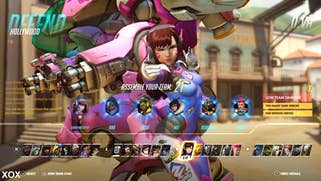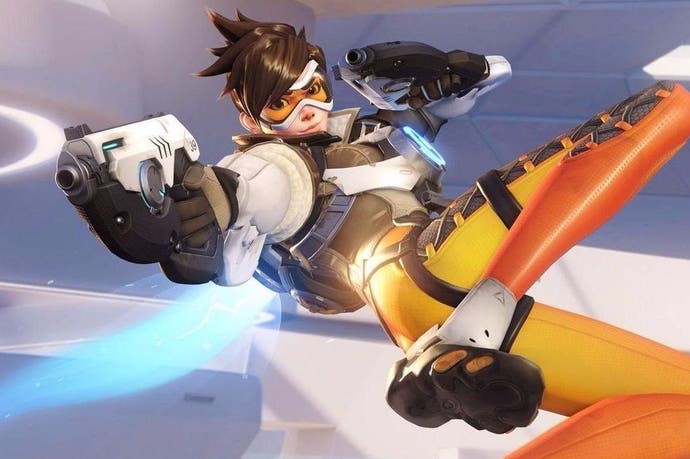Overwatch on Xbox One X: does its dynamic 4K scaler hold up?
A big upgrade over the standard console - and PS4 Pro.
The Xbox One X upgrades keep on coming, with Blizzard's Overwatch the latest title to receive 4K support. We went into this one with a certain sense of tredipation: after all, Overwatch's PlayStation 4 Pro support ended up delivering only 4K HUDs overlaid on a regular 1080p presentation. It was a big disappointment at the time, and while users did get improved texture filtering over the base PS4 version along with other minor tweaks, there was the sense that Pro was capable of delivering much, much more.
The good news is that Blizzard has delivered with its Xbox One X work. The patch itself is only a 650MB download, so don't expect a sweeping upgrade in the core artwork to support the 4K standard. What you get in asset quality is already equivalent to the PC's top texture setting, which was already in place on the base PS4 and Xbox One releases. But crucially, what the developer has delivered is a clear and obvious upgrade in resolution, worthy of your ultra HD display.
A dynamic scaler is in play on Xbox One X, and owing to the highly variable nature of the gameplay itself, the range of pixel counts covered is significant. Based on a sample of over 30 still shots derived from a wide cross-section of gameplay, the upper bounds of the scaler are indeed a full 4K. In the opening lobby area, for example, the character selection screen or less demanding spots on each map render at the maximum 3840x2160.
However, the moments of peak action with all heroes on-screen likely won't hit that top value and the lowest figure recorded in our samples is 2112x2160 - based on a hectic street fight on the Numbani map. This reveals how the scaler works; the vertical resolution of 2160 pixels stays locked in place no matter what happens on-screen. That 2112x2160 lower bounds of our sample range accounts for 55 per cent of a full 4K. The still represents a huge jump over the dynamic 1080p on a standard Xbox One, and X hardware gives us the sharpest looking take on Overwatch on console.
Full 4K throughout is off the table then, but it's still a great-looking game and as a dynamic scaler, most of the time you'll be sitting within the two extremes, but Xbox One X shifts this value so seamlessly, it's hard to pick out in motion. Based on a lot of sampling at stress points, a consistent number that comes up is 2752x2160, or 71 per cent of 4K. That's with a lot of characters on-screen too - and it's all in aid of keeping 60fps performance locked as much as possible during Xbox One X gameplay.
In assessing Overwatch's new upgrade, we went back to the PS4 Pro version to see if anything had changed in the 14 months since we first looked at it - a stealth upgrade to a more flattering presentation, for example. Sadly, what you get on Pro is still running at 1920x1080, leaving us with a big win for X hardware in straight head-to-head comparisons. Enhanced texture filtering was added on Pro and it is welcome, delivering a visual match for 8x anisotropic filtering. However, Xbox One X seems to go one step further, with the results matching PC's full 16x.
Beyond this you're broadly getting the same package as PS4 Pro. Shadow resolution is a match between the two, falling short of PC's top quality shadow setting, and while the improvement is only very subtle at best, ambient occlusion presents improvement on the Xbox One X as well. Beyond that, the visual feature set of the game remains firmly in console territory, so PC's higher end reflection settings aren't implemented.















In terms of performance, 60fps is crucial to the Overwatch experience and on PS4 Pro, there is a sense that fixed 1920x1080 resolution gives it a comfortable overhead in keeping 60fps performance locked down. By comparison, Xbox One X shows small and occasional signs of strain in sustaining its target frame-rate. In a nutshell, the game uses an adaptive v-sync to render out incomplete frames, if they exceed the render time budget. What that means in practical terms is screen-tear on Xbox One X. At times, you'll see the top third of the screen briefly showing tear artefacts as the renderer tries to keep up with the action.
As such, actual frame drops are very rare. Barring one or two hitches, 60fps is practically locked down on Xbox One X. The only small downside next to PS4 Pro is the outbursts of tearing at the top of the screen, manifesting as a slight wobble, but that's a relatively small price to pay for the resolution increase. Again, taking areas which show the lowest pixel count of 2112x2160 - taken as the worst-case scenario for the engine from our test range - the frame-rate only drops to 58fps.
It's an excellent showing overall and the implementation here is so impressive that it only deepens the mystery surrounding the lacklustre Pro upgrade. Xbox One X does have big compute and memory bandwidth advantages over its PlayStation rival, but at the minimum there's a 2.2x increase in pixel-count when the X's dynamic scaler is pushed hardest, rising to a more typical 2.9x in busy gameplay, propelled upwards again to a full-on 4x in less busy scenes. Despite the spec advantage, we still feel sure that PS4 Pro could deliver much more.
Xbox One X owners clearly get the better deal. Between the dynamic resolution and adaptive v-sync, you get the sense the six teraflop GPU is being maxed out in rendering the best possible image, without significant frame-rate drops that will intrude on the quality of the gameplay. It's a satisfying result and while the PC version still offers up the definitive Overwatch experience, this upgrade gives us the best take on the game available for consoles.
















